PDMS-PDMS Micro Channels Filled with Phase-Change Material for Chip Cooling
Abstract
:1. Introduction
2. Materials and Methods
2.1. Fabrication of the Mold Master
2.2. Fabrication of PDMS Microchannels
2.3. Injection with Phase-Change Material
3. Results and Evaluation of the Cooling Performance
4. Conclusions
Supplementary Materials
Acknowledgments
Author Contributions
Conflicts of Interest
References
- Ollier, E.; Soupremanien, U.; Remondière, V.; Dijon, J.; Le Poche, H.; Seiler, A.; Lefevre, F.; Lips, S.; Kinkelin, C.; Rolland, N.; et al. Thermal management of electronic devices by composite materials integrated in silicon. Microelectron. Eng. 2014, 127, 28–33. [Google Scholar] [CrossRef]
- Tu, J.; Yuen, W.; Gong, Y. An assessment of direct chip cooling enhancement using pin fins. Heat Transf. Eng. 2012, 33, 845–852. [Google Scholar] [CrossRef]
- Chowdhury, I.; Prasher, R.; Lofgreen, K.; Chrysler, G.; Narasimhan, S.; Mahajan, R.; Koester, D.; Alley, R.; Venkatasubramanian, R. On-chip cooling by superlattice-based thin-film thermoelectrics. Nat. Nanotechnol. 2009, 4, 235–238. [Google Scholar] [CrossRef] [PubMed]
- Kercher, D.; Jeong-Bong, L.; Brand, O.; Allen, M.; Glezer, A. Microjet cooling devices for thermal management of electronics. IEEE Trans. Compon. Packag. Technol. 2003, 26, 359–366. [Google Scholar] [CrossRef]
- Kordás, K.; Tóth, G.; Moilanen, P.; Kumpumäki, M.; Vähäkangas, J.; Uusimäki, A.; Vajtai, R.; Ajayan, P. Chip cooling with integrated carbon nanotube microfin architectures. Appl. Phys. Lett. 2007, 90, 123105. [Google Scholar] [CrossRef]
- Fu, Y.; Nabiollahi, N.; Wang, T.; Wang, S.; Hu, Z.; Carlberg, B.; Zhang, Y.; Wang, X.; Liu, J. A complete carbon-nanotube-based on-chip cooling solution with very high heat dissipation capacity. Nanotechnology 2012, 23, 045304. [Google Scholar] [CrossRef] [PubMed]
- Huang, Z.; Pan, T.; Gao, M.; Lin, Y. Chip Cooling with Carbon Nanotube Heat Sink. In Proceedings of the International Conference on Electronic Packaging Technology, Chengdu, China, 12–15 August 2014; pp. 183–185. [Google Scholar]
- Kandasamy, R.; Wang, X.; Mujumdar, A. Transient cooling of electronics using phase change material (PCM)-based heat sinks. Appl. Therm. Eng. 2008, 28, 1047–1057. [Google Scholar] [CrossRef]
- Pielichowska, K.; Pielichowski, K. Phase change materials for thermal energy storage. Prog. Mater. Sci. 2014, 65, 67–123. [Google Scholar] [CrossRef]
- Yu, S.; Wang, X.; Wu, D. Microencapsulation of n-octadecane phase change material with calcium carbonate shell for enhancement of thermal conductivity and serving durability: Synthesis, microstructure, and performance evaluation. Appl. Energy 2014, 114, 632–643. [Google Scholar] [CrossRef]
- Fan, S.; Gao, H.; Xu, Q.; Tan, L. Nanoencapsulation of n-Octadecane Phase Change Material with Polyaniline Shell for Thermal Energy Storage. In Proceedings of the 3rd International Conference on Advances in Energy and Environmental Science 2015, Zhuhai, China, 25–26 July 2015; pp. 1547–1550. [Google Scholar]
- Joo, Y.; Yeh, H.; Dieu, K.; Kim, C. Air cooling of a microelectronic chip with diverging metal microchannels monolithically processed using a single mask. J. Micromech. Microeng. 2008, 18, 115022. [Google Scholar] [CrossRef]
- Colgan, E.; Furman, B.; Gaynes, M.; LaBianca, N.; Magerlein, J.; Polastre, R.; Bezama, R.; Marston, K.; Schmidt, R. High performance and subambient silicon microchannel cooling. J. Heat Transf. 2007, 129, 1046. [Google Scholar] [CrossRef]
- Zhang, K.; Liu, Z.; Zheng, B. A new 3D chip cooling technology using micro-channels thermosyphon with super-moist fluids and nanofluids. Energy Convers. Manag. 2016, 128, 44–56. [Google Scholar] [CrossRef]
- Tullius, J.; Vajtai, R.; Bayazitoglu, Y. A review of cooling in microchannels. Heat Transf. Eng. 2011, 32, 527–541. [Google Scholar] [CrossRef]
- Yi, P.; Khoshmanesh, K.; Chrimes, A.; Campbell, J.; Ghorbani, K.; Nahavandi, S.; Rosengarten, G.; Kalantar-zadeh, K. Dynamic nanofin heat sinks. Adv. Energy Mater. 2014, 4, 1300537. [Google Scholar] [CrossRef]
- Paik, P.; Pamula, V.; Chakrabarty, K. Adaptive cooling of integrated circuits using digital microfluidics. IEEE Trans. Very Large Scale Integr. (VLSI) Syst. 2008, 16, 432–443. [Google Scholar] [CrossRef]
- Chakraborty, M.; Ghosh, A.; DasGupta, S. Enhanced microcooling by electrically induced droplet oscillation. RSC Adv. 2014, 4, 1074–1082. [Google Scholar] [CrossRef]
- Chakraborty, M.; Anand, R.; Rao, P.; Sen, S.; DasGupta, S. Oscillating nanofluid droplet for micro-cooling. Sens. Actuators B Chem. 2017, 239, 562–570. [Google Scholar] [CrossRef]
- Pola, T.; Häkkinen, T.; Hännikäinen, J.; Vanhala, J. Thermal performance analysis of 13 heat sink materials suitable for wearable electronics applications. Sci. Technol. 2013, 3, 67–73. [Google Scholar]
- Oshman, C.; Li, Q.; Liew, L.; Yang, R.; Bright, V.; Lee, Y. Flat flexible polymer heat pipes. J. Micromech. Microeng. 2012, 23, 015001. [Google Scholar] [CrossRef]
- Waheed, S.; Cabot, J.; Macdonald, N.; Kalsoom, U.; Farajikhah, S.; Innis, P.; Nesterenko, P.; Lewis, T.; Breadmore, M.; Paull, B. Enhanced physicochemical properties of polydimethylsiloxane based microfluidic devices and thin films by incorporating synthetic micro-diamond. Sci. Rep. 2017, 7, 15109. [Google Scholar] [CrossRef] [PubMed]
- Yi, P.; Awang, R.; Rowe, W.; Kalantar-zadeh, K.; Khoshmanesh, K. PDMS nanocomposites for heat transfer enhancement in microfluidic platforms. Lab Chip 2014, 14, 3419–3426. [Google Scholar] [CrossRef] [PubMed]
- Lin, Y.; Jia, Y.; Alva, G.; Fang, G. Review on thermal conductivity enhancement, thermal properties and applications of phase change materials in thermal energy storage. Renew. Sustain. Energy Rev. 2018, 82, 2730–2742. [Google Scholar] [CrossRef]
- Makuta, T.; Kadoya, K.; Izumi, H.; Miyatake, M. Synthesis of cyanoacrylate-covered xylitol microcapsules for thermal storage. Chem. Eng. J. 2015, 273, 192–196. [Google Scholar]
- Tyagi, V.; Kaushik, S.; Tyagi, S.; Akiyama, T. Development of phase change materials based microencapsulated technology for buildings: A review. Renew. Sustain. Energy Rev. 2011, 15, 1373–1391. [Google Scholar] [CrossRef]
- Zhang, H.; Xing, F.; Cui, H.; Chen, D.; Ouyang, X.; Xu, S.; Wang, J.; Huang, Y.; Zuo, J.; Tang, J. A novel phase-change cement composite for thermal energy storage: Fabrication, thermal and mechanical properties. Appl. Energy 2016, 170, 130–139. [Google Scholar] [CrossRef]
- Ma, G.; Liu, S.; Xie, S.; Jing, Y.; Zhang, Q.; Sun, J.; Jia, Y. Binary eutectic mixtures of stearic acid-n-Butyramide/n-Octanamide as phase change materials for low temperature solar heat storage. Appl. Therm. Eng. 2017, 111, 1052–1059. [Google Scholar] [CrossRef]
- Mondal, S. Phase change materials for smart textiles—An overview. Appl. Therm. Eng. 2008, 28, 1536–1550. [Google Scholar] [CrossRef]
- Al-Hallaj, S.; Selman, J. Thermal modeling of secondary lithium batteries for electric vehicle/hybrid electric vehicle applications. J. Power Sources 2002, 110, 341–348. [Google Scholar] [CrossRef]
- Saha, S.; Dutta, P. Thermal management of electronics using PCM-based heat sink subjected to cyclic heat load. IEEE Trans. Compon. Packag. Manuf. Technol. 2012, 2, 464–473. [Google Scholar] [CrossRef]
- Sharma, A.; Tyagi, V.; Chen, C.; Buddhi, D. Review on thermal energy storage with phase change materials and applications. Renew. Sustain. Energy Rev. 2009, 13, 318–345. [Google Scholar] [CrossRef]
- Zhang, H.; Wang, X.; Wu, D. Silica encapsulation of n-Octadecane via sol–gel process: A novel microencapsulated phase-change material with enhanced thermal conductivity and performance. J. Colloid Interface Sci. 2010, 343, 246–255. [Google Scholar] [CrossRef] [PubMed]
- Zhang, H.; Wang, X. Synthesis and properties of microencapsulated n-Octadecane with polyurea shells containing different soft segments for heat energy storage and thermal regulation. Sol. Energy Mater. Sol. Cells 2009, 93, 1366–1376. [Google Scholar] [CrossRef]
- Qiu, X.; Li, W.; Song, G.; Chu, X.; Tang, G. Fabrication and characterization of microencapsulated n-Octadecane with different crosslinked methylmethacrylate-based polymer shells. Sol. Energy Mater. Sol. Cells 2012, 98, 283–293. [Google Scholar] [CrossRef]
- You, M.; Wang, X.; Zhang, X.; Zhang, L.; Wang, J. Microencapsulated n-Octadecane with styrene-divinybenzene co-polymer shells. J. Polym. Res. 2010, 18, 49–58. [Google Scholar] [CrossRef]
- Liu, J.; Cai, B.; Zhu, J.; Ding, G.; Zhao, X.; Yang, C.; Chen, D. Process research of high aspect ratio microstructure using SU-8 resist. Microsyst. Technol. 2004, 10, 265–268. [Google Scholar] [CrossRef]
- Maluf, N. An introduction to microelectromechanical systems engineering. Meas. Sci. Technol. 2002, 13, 229. [Google Scholar] [CrossRef]
- Natarajan, S.; Chang-Yen, D.; Gale, B. Large-area, high-aspect-ratio SU-8 molds for the fabrication of PDMS microfluidic devices. J. Micromech. Microeng. 2008, 18, 045021. [Google Scholar] [CrossRef]
- Dy, A.; Cosmanescu, A.; Sluka, J.; Glazier, J.; Stupack, D.; Amarie, D. Fabricating microfluidic valve master molds in SU-8 photoresist. J. Micromech. Microeng. 2014, 24, 057001. [Google Scholar] [CrossRef]
- Eddings, M.; Johnson, M.; Gale, B. Determining the optimal PDMS–PDMS bonding technique for microfluidic devices. J. Micromech. Microeng. 2008, 18, 067001. [Google Scholar] [CrossRef]
- Bhattacharya, S.; Datta, A.; Berg, J.; Gangopadhyay, S. Studies on surface wettability of poly (dimethyl) siloxane (PDMS) and glass under oxygen-plasma treatment and correlation with bond strength. J. Microelectromech. Syst. 2005, 14, 590–597. [Google Scholar] [CrossRef]
- Xiong, L.; Chen, P.; Zhou, Q. Adhesion promotion between PDMS and glass by oxygen plasma pre-treatment. J. Adhes. Sci. Technol. 2014, 28, 1046–1054. [Google Scholar] [CrossRef]

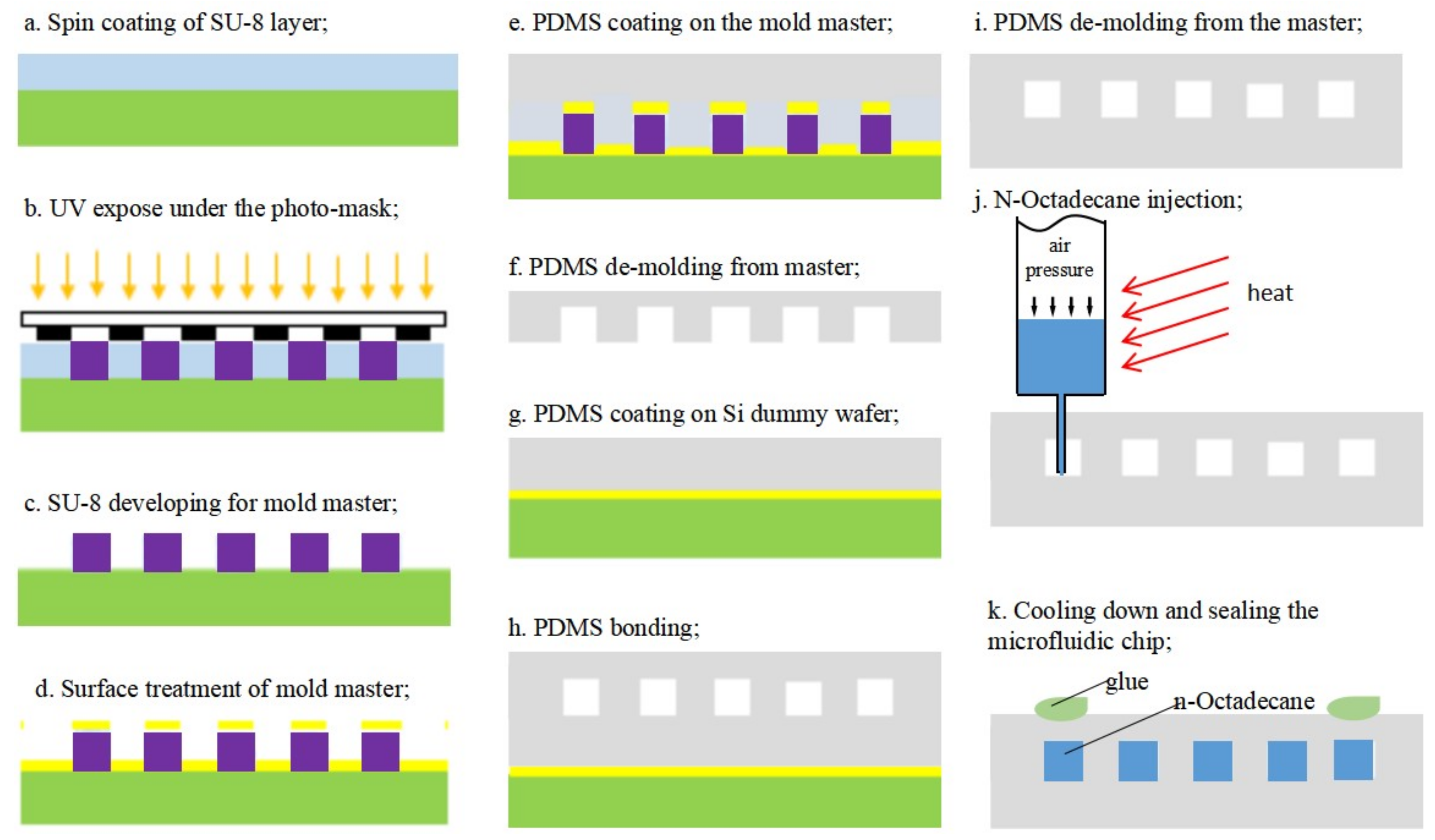

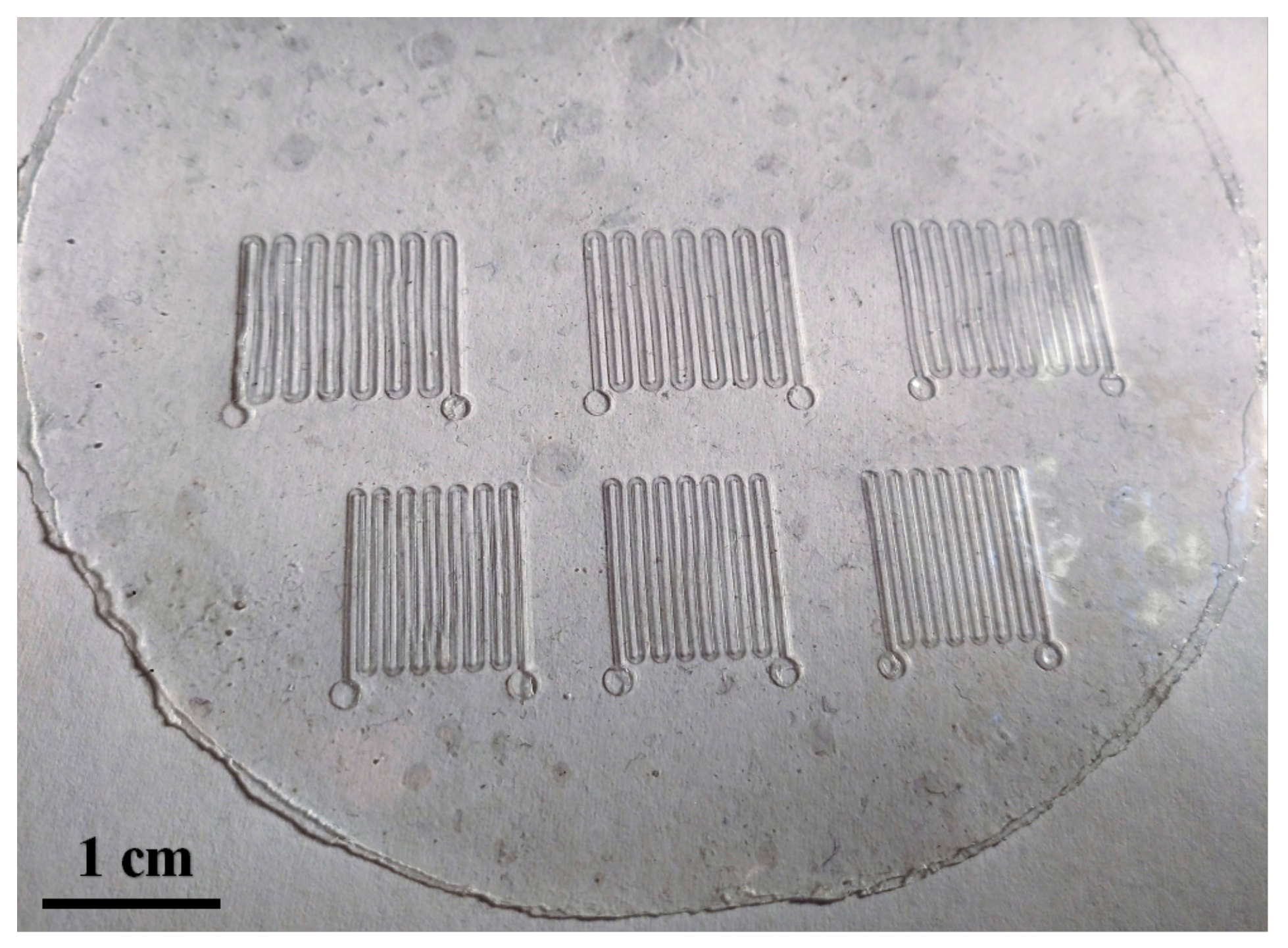

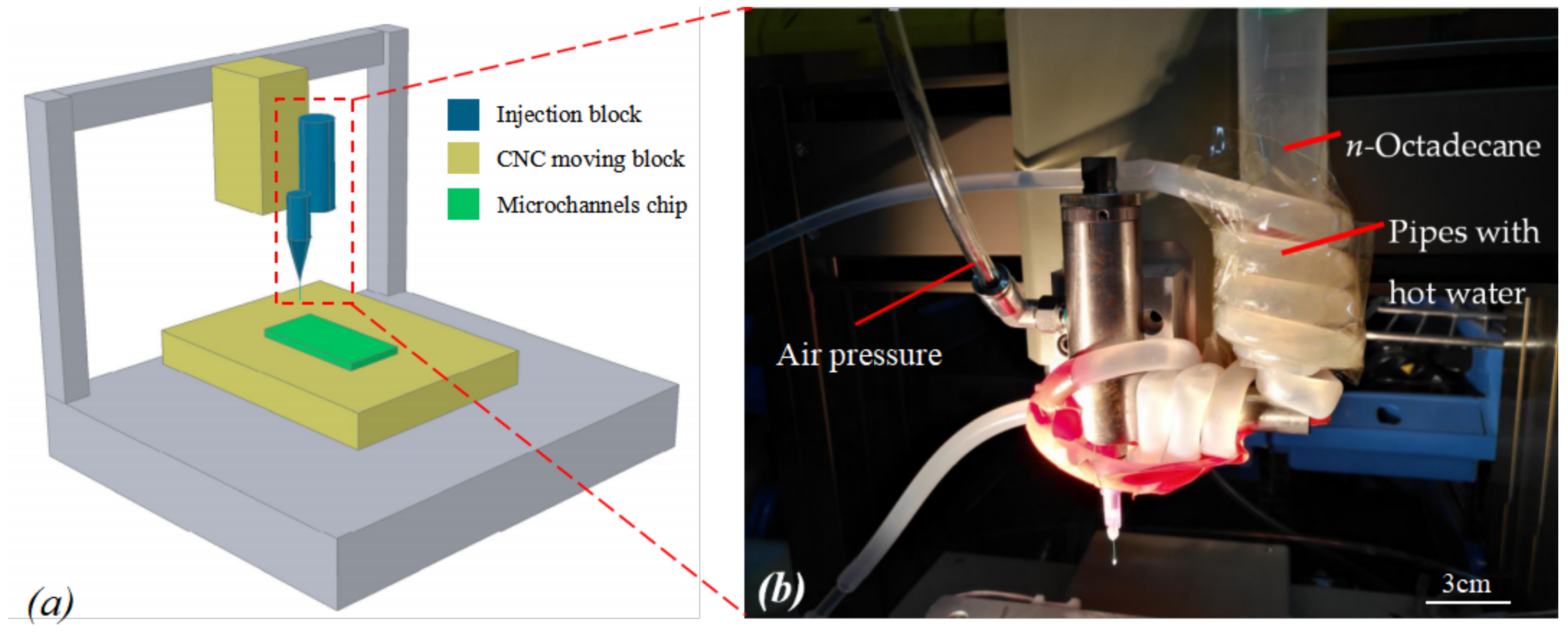
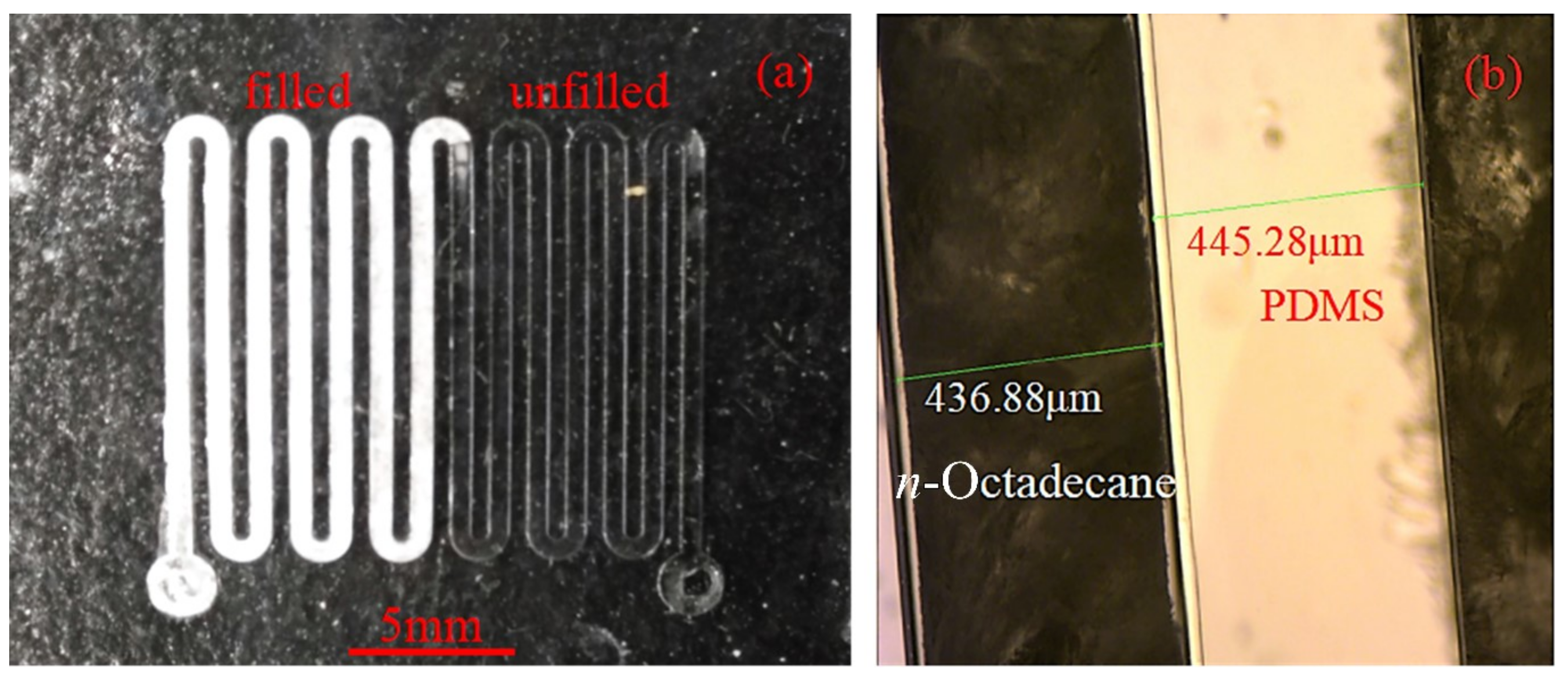


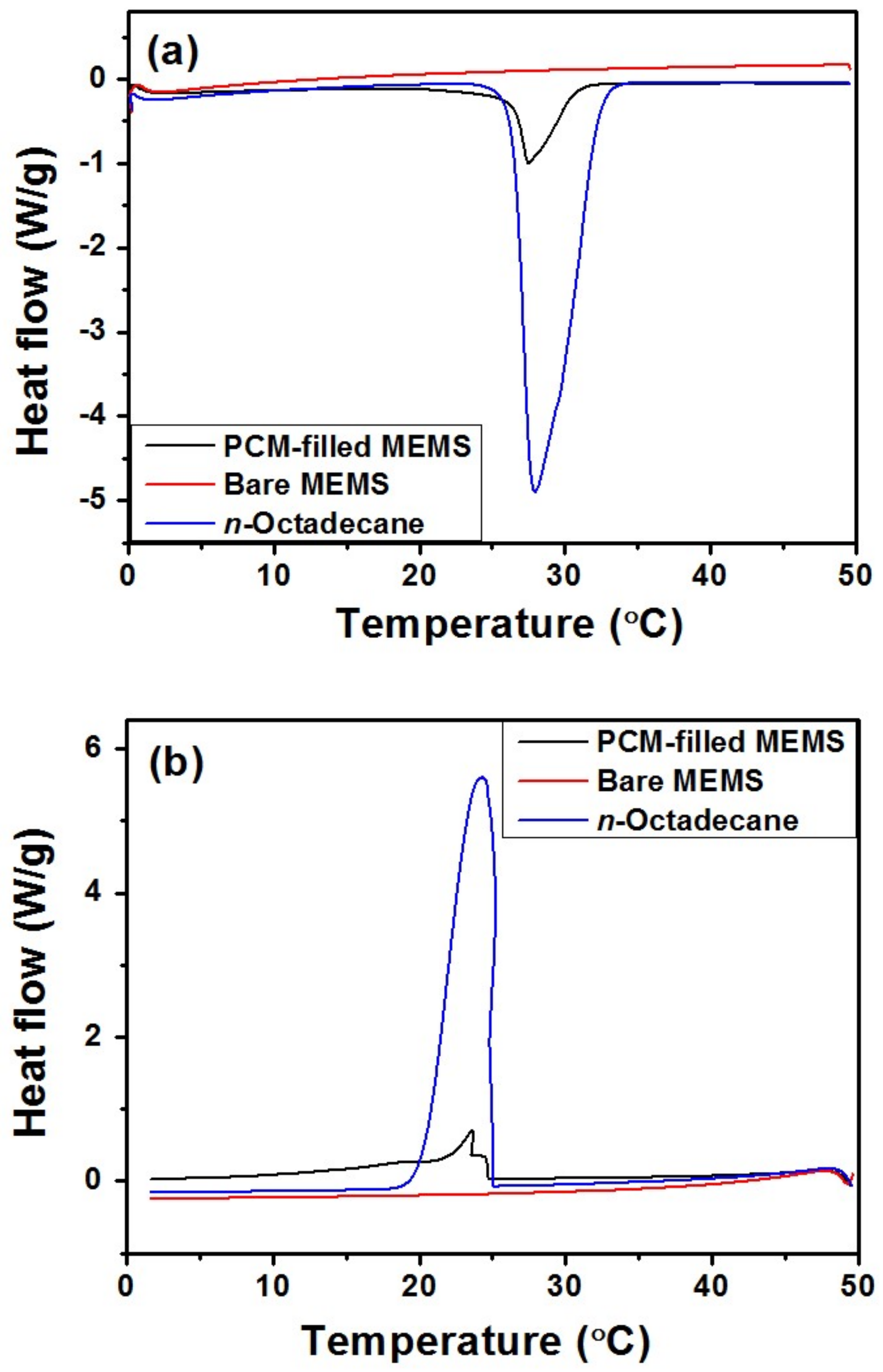
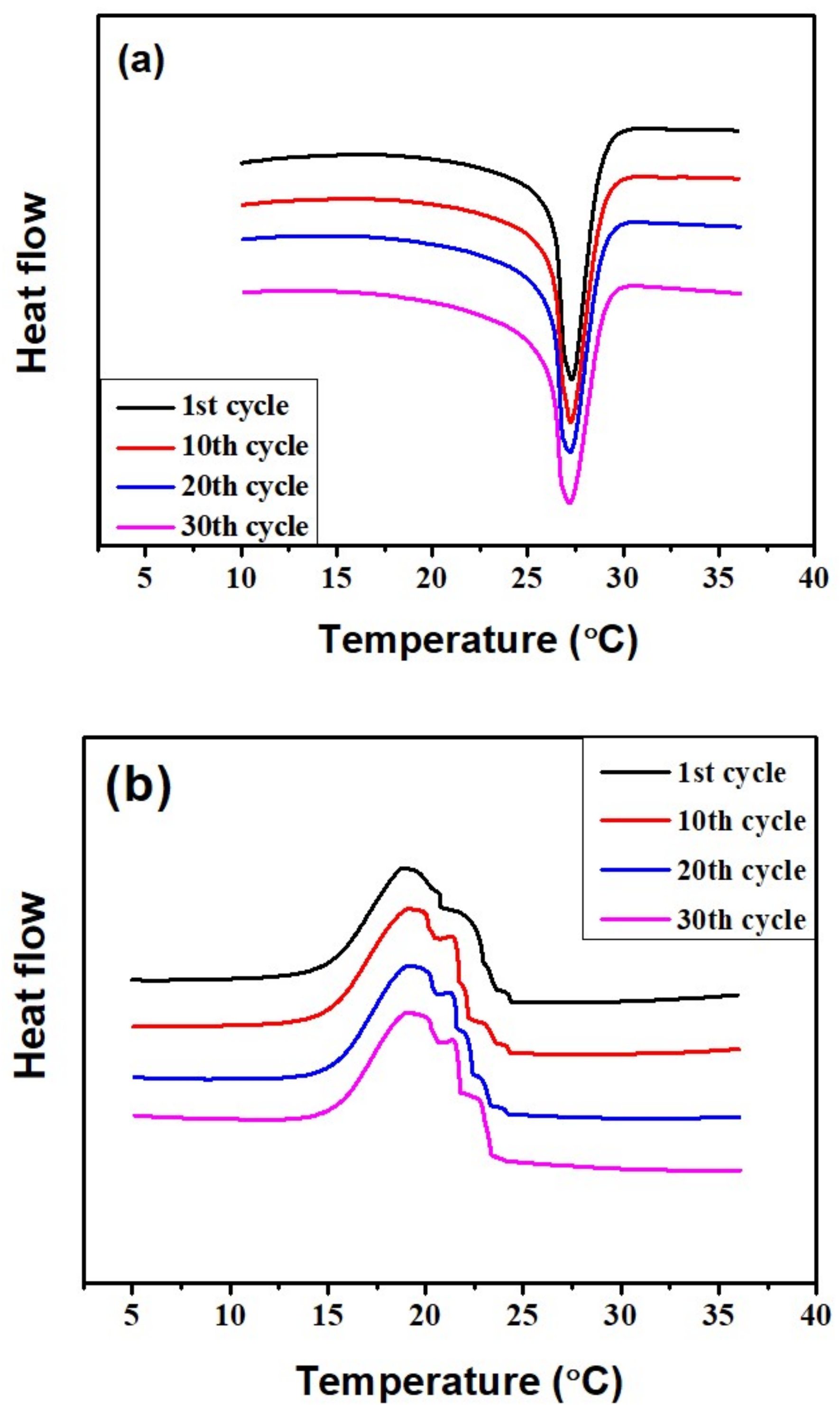
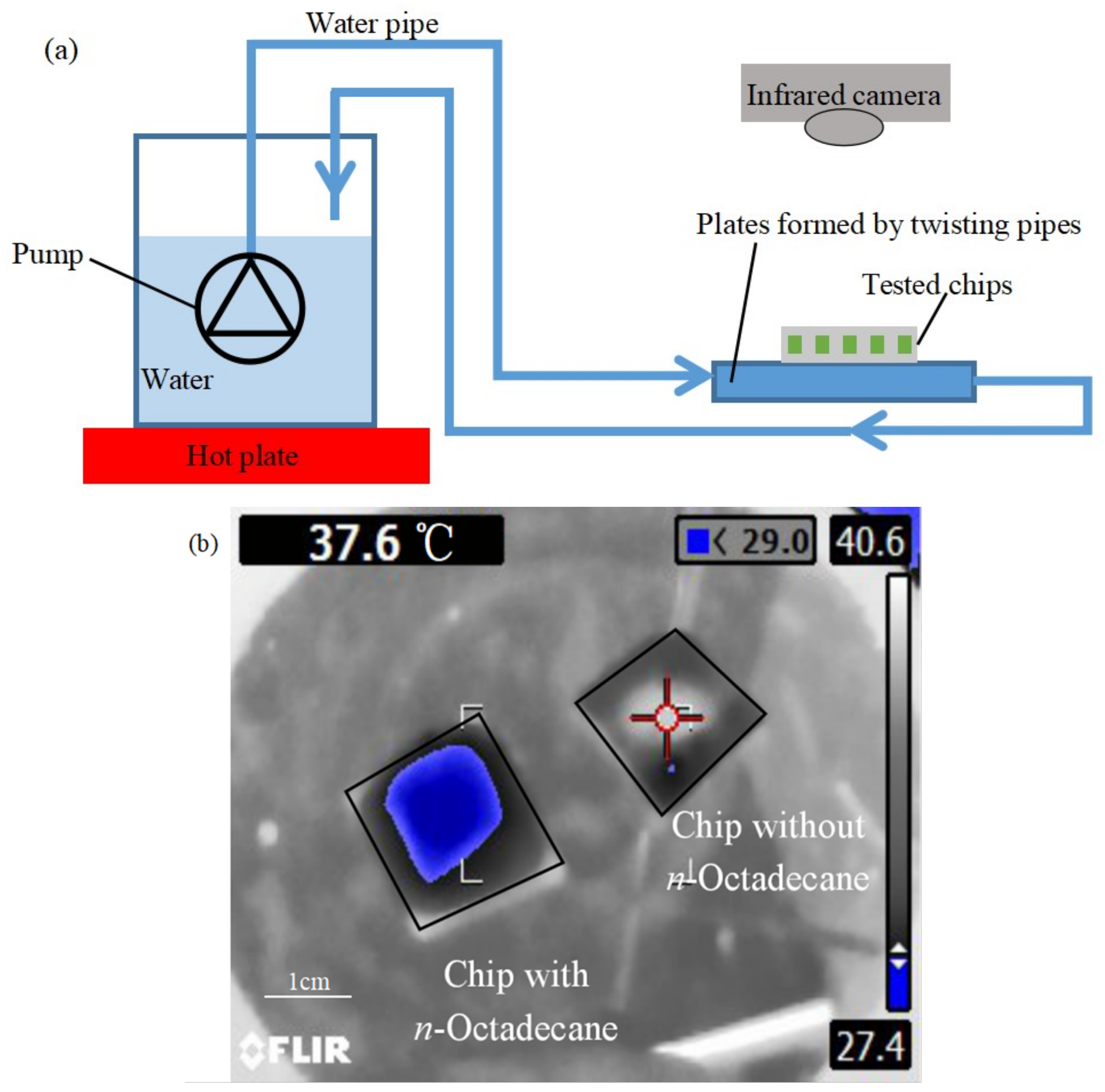
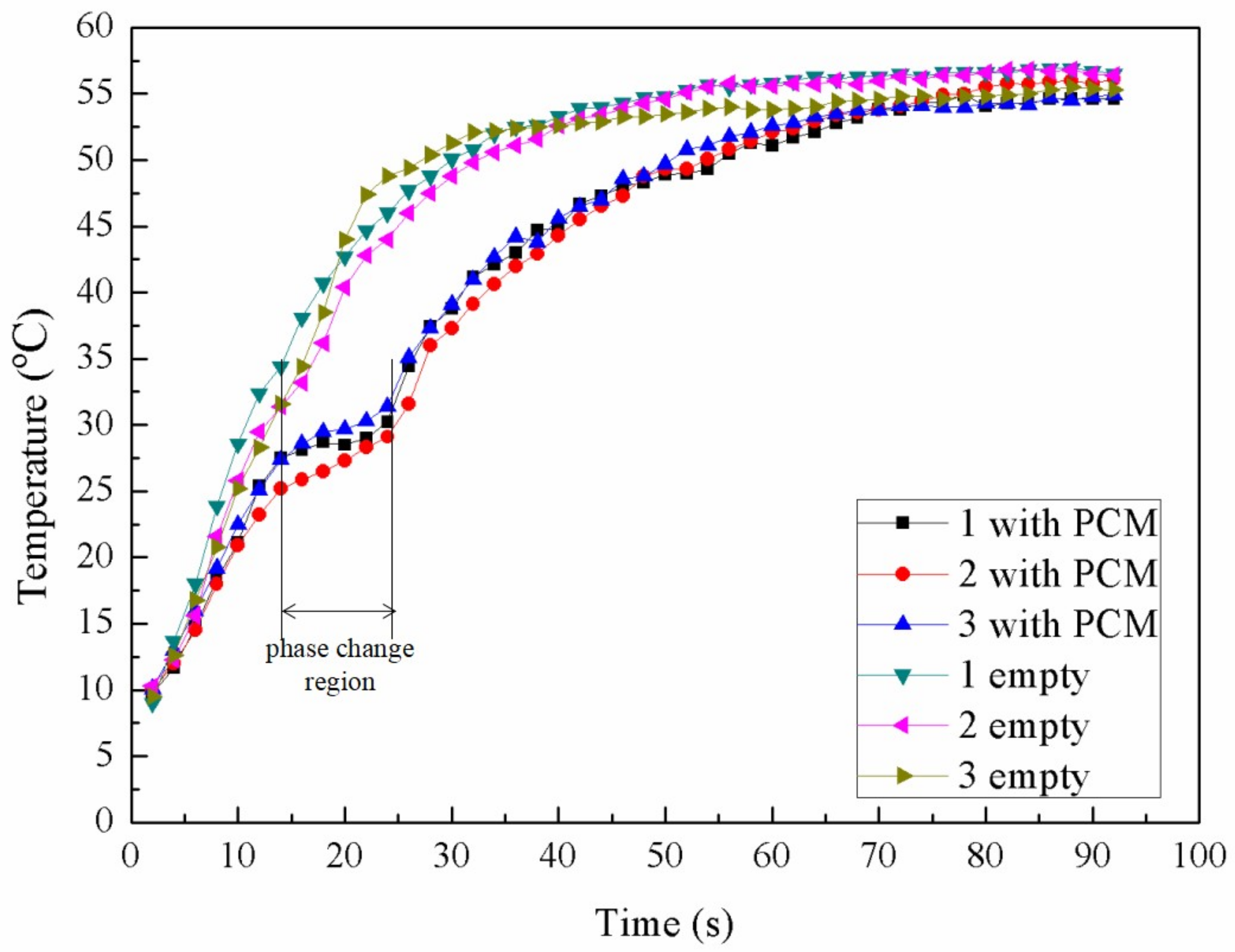
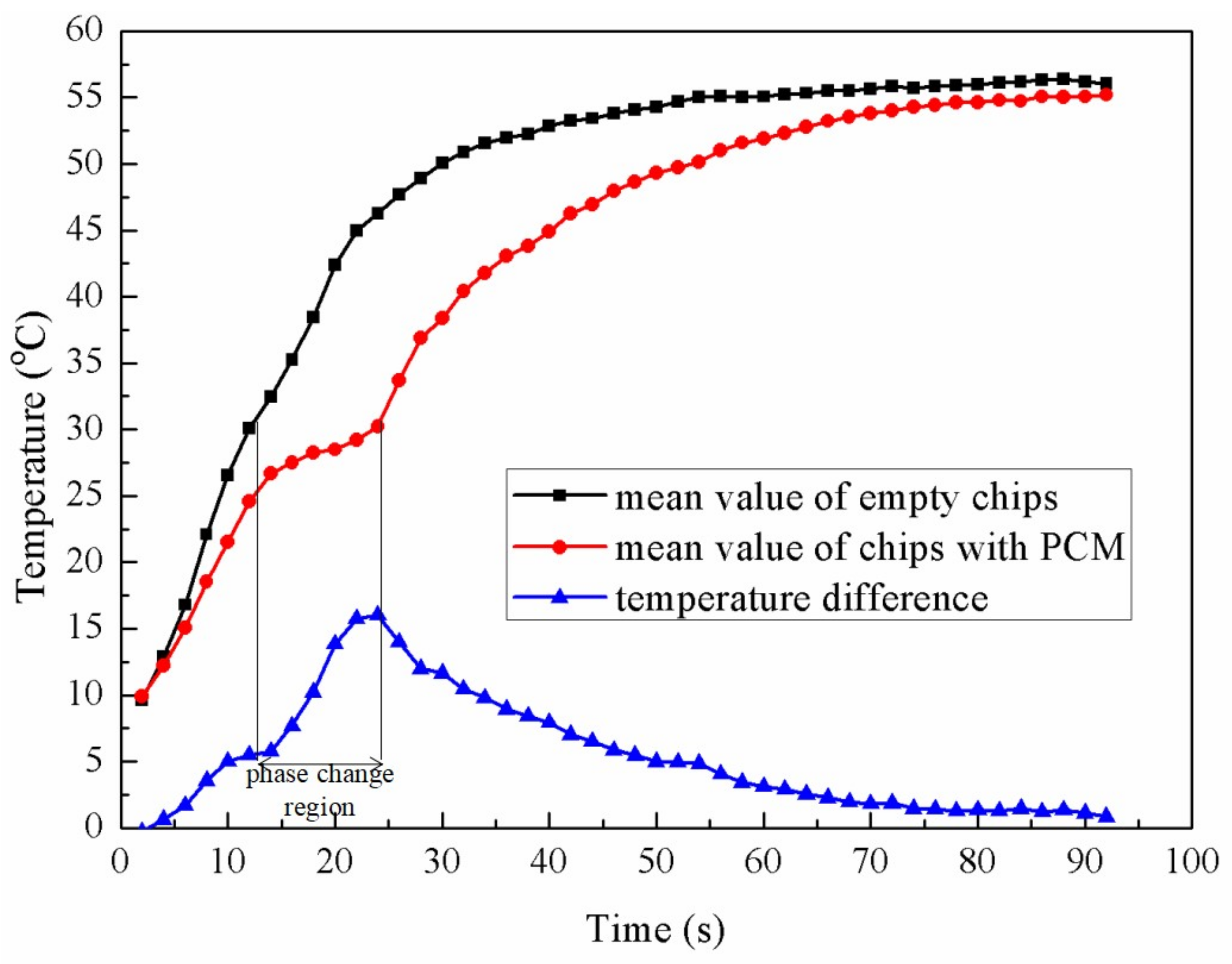
© 2018 by the authors. Licensee MDPI, Basel, Switzerland. This article is an open access article distributed under the terms and conditions of the Creative Commons Attribution (CC BY) license (http://creativecommons.org/licenses/by/4.0/).
Share and Cite
Liu, Z.; Qin, S.; Chen, X.; Chen, D.; Wang, F. PDMS-PDMS Micro Channels Filled with Phase-Change Material for Chip Cooling. Micromachines 2018, 9, 165. https://doi.org/10.3390/mi9040165
Liu Z, Qin S, Chen X, Chen D, Wang F. PDMS-PDMS Micro Channels Filled with Phase-Change Material for Chip Cooling. Micromachines. 2018; 9(4):165. https://doi.org/10.3390/mi9040165
Chicago/Turabian StyleLiu, Zong, Siyin Qin, Xingwei Chen, Dazhu Chen, and Fei Wang. 2018. "PDMS-PDMS Micro Channels Filled with Phase-Change Material for Chip Cooling" Micromachines 9, no. 4: 165. https://doi.org/10.3390/mi9040165




